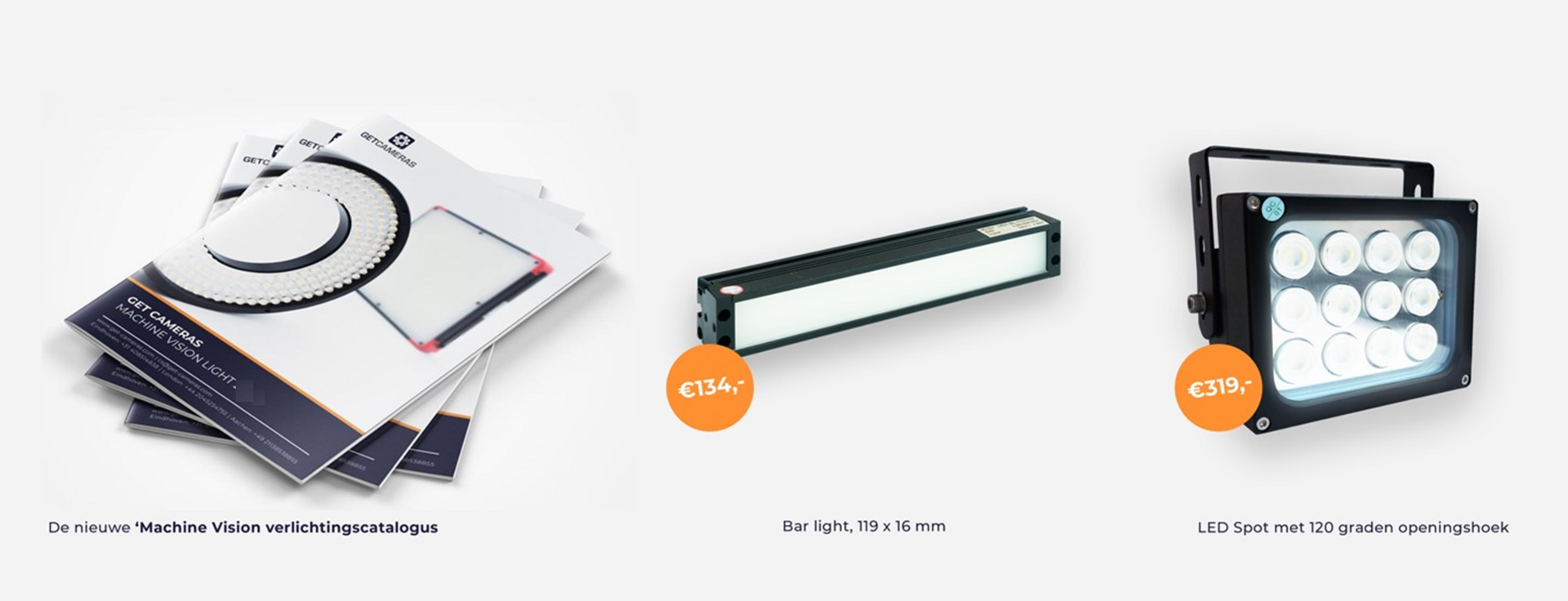 Machine vision industrial lights are reliable products which provide constant, non-fluctuating power/light output. They are designed to be used 24/7, providing the best light conditions and machine vision lights are available in many colours to create extra contrast.
Machine vision industrial lights are reliable products which provide constant, non-fluctuating power/light output. They are designed to be used 24/7, providing the best light conditions and machine vision lights are available in many colours to create extra contrast.
Consumer lights are very different than industrial lights. The current / light output can fluctuate and is not constant. Often lower quality LEDs are used and placed unevenly so the light is not evenly distributed. As a result hotspots may be visible. The consumer lights are shortly available on the market and cannot be purchased 2-5 years later. There are (substantial) differences between same batches and different production batches.
A big issue with consumer led lights is that the LED is often powered with AC voltage, this means there is always a ON-OFF-ON-OFF state. If the camera exposure time is not in sync with these OFF moments, it will capture the light when OFF and it results in a intermittent/flickering effect.
Consumer lights are available in just a few options and usually this is spotlight or led bar, so they are limited in the application.
There are many different machine vision light types. Each light will enhance specific features of the the product. In some applications multiple different machine vision lights are combined to created the required contrast. Here an overview of each machine vision light type.
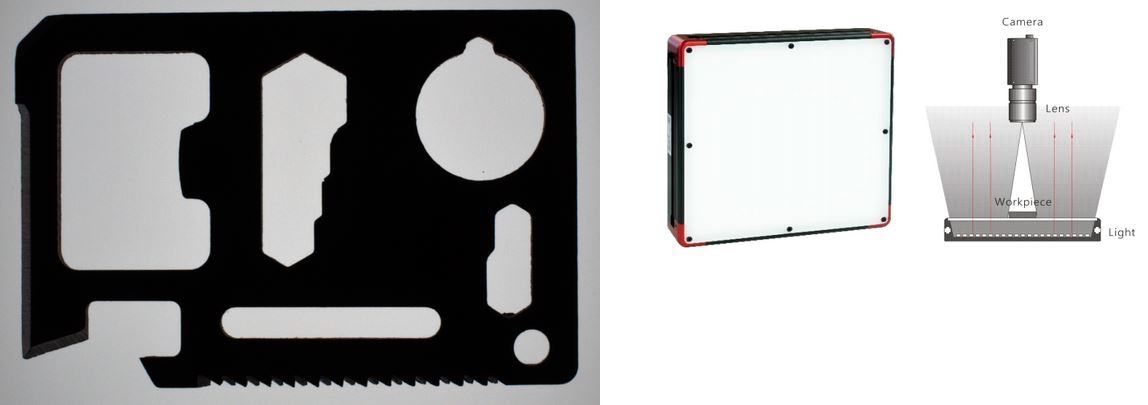
A light shining at a very low angle towards the object.
Applications: measure relief characteristics or detect surface defects
Link of product: Industrial ring light (dark-field) (get-cameras.com)
Sample image: a 2 euro coin.
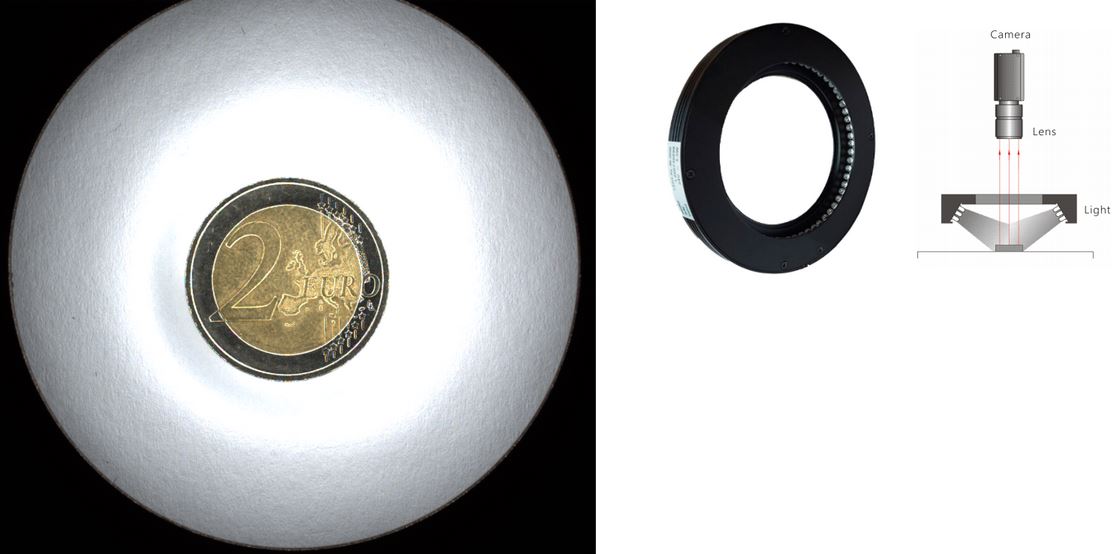
A ring with several LEDs installed at a perpendicular angle an optional a diffuser. Ideal for illumination of round objects. When the product is rectangular the corners of the product are darker. For slightly reflective objects the diffuse version is required. A diffused ringlight also more evenly distributes the light.
Applications: general use for non reflecting or slightly reflecting products
Link of product: Industrial ring light (diffuse flat bright field) (get-cameras.com)
Sample: a reflective visit card.

A semi sphere with LEDs placed pointing inside the dome. this light provides good light for object of medium to high reflectivity, chance of a dark spot in the middle due to shape. Relief is less marked.
Applications: general use for highly reflective objects
Link of product: Industrial dome light (get-cameras.com)
Sample image: a very reflective plastified visit card.

A light with a half transparent mirror inside. Due to mirror, the camera and a flat light are on the same axis / position. As a result, flat areas will reflect back, and not flat areas become darker. There are no dark spots, therefore ideal for reflective objects.
Applications: inspection of highle reflective objects
Link of product: Industrial-coaxial-light (get-cameras.com)
Sample image: a very reflective plastified visit card
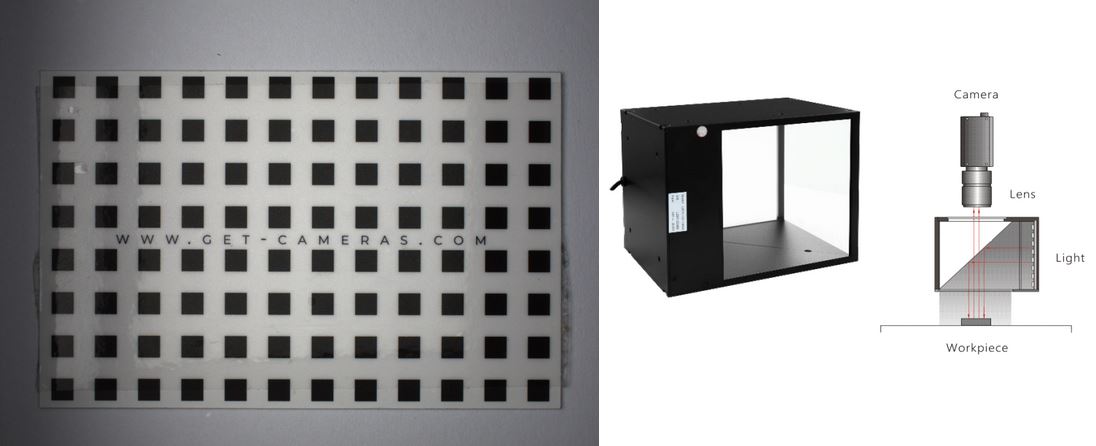 .
.
Industrial barlights have several lines of LEDs. Optional is has a diffusing plate. This light is mostly used in pairs or quartet to minimize shadows and to illuminate the object evenly. Because the barlight position is customizable it can be placed close to the object or next to the camera; You can simulate “darkfield” light and “Bright field” light and even a “backfield” light.
Applications: inspection of flat object (both highly reflective as not reflective), inspection of any non reflecting objects.
Link of product: Industrial bar light (get-cameras.com)
Sample image: a very reflective plastified card.
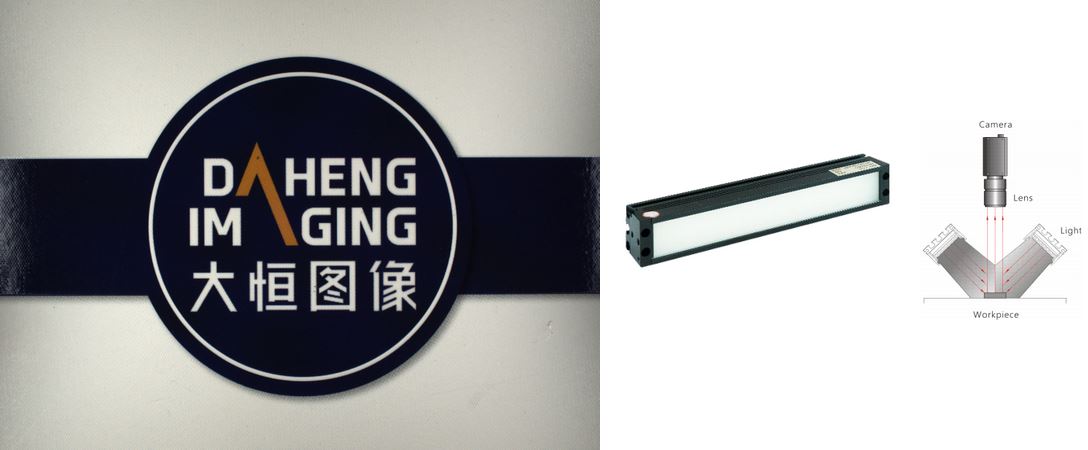
Each object is different, the main question to begin is "what" do you want to see and/or detect? The light selection will be based on this and the object physical characteristics.
Download our machine vision lighting datasheets here by filling in the form.